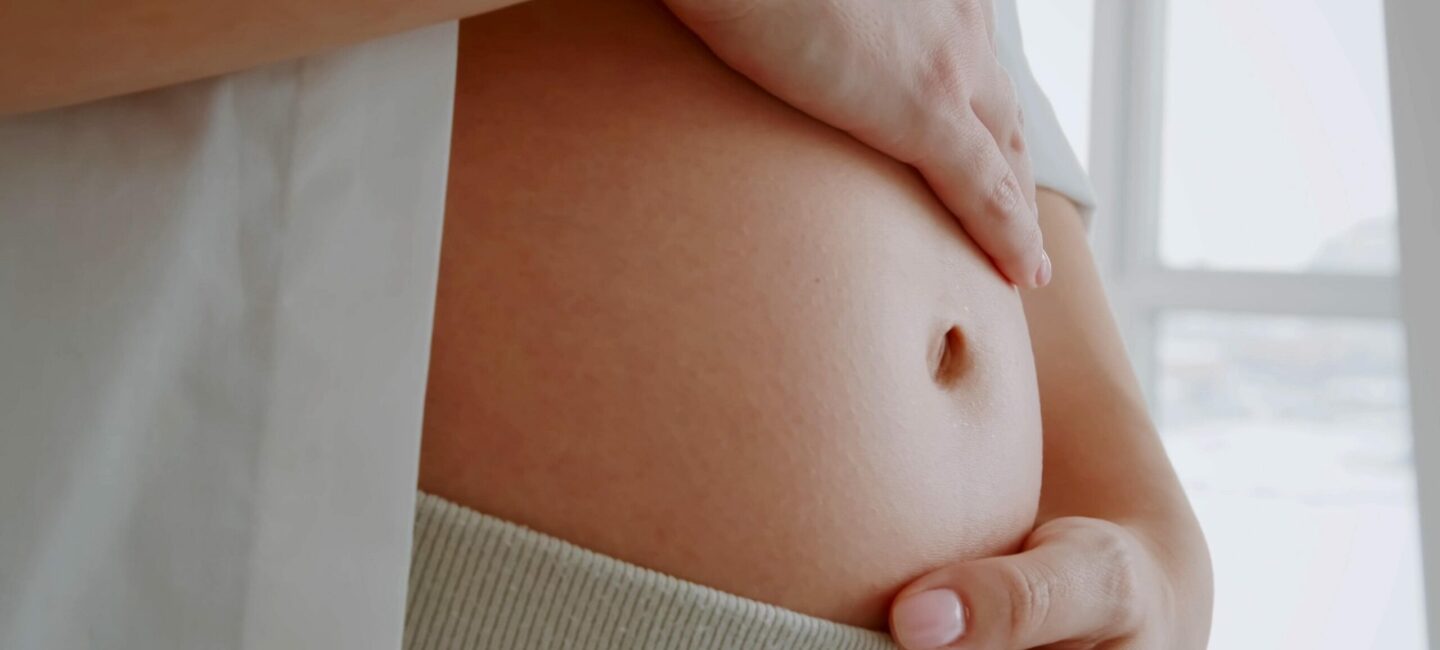
When we talk about contractions, we naturally think of labor. But… contractions can also occur during pregnancy!
These are called Braxton-Hicks contractions: here’s everything you need to know!
What are Braxton-Hicks contractions?
Before focusing on Braxton-Hicks contractions, a quick anatomy lesson is in order. The uterus is made up of several layers: the inside is lined with a mucous membrane that hosts the fetus (the endometrium) while the outside is composed of muscle fibers (the myometrium).
It’s these muscle fibers that cause contractions. They are made of smooth muscle cells that contract: the uterus contracts involuntarily, like the heart.
In 1872, John Braxton Hicks described a type of contraction that occurs during pregnancy but is generally harmless as it has no effect on the cervix. These contractions were later named “Braxton-Hicks contractions.”
Braxton-Hicks contractions are very different from those that signal the start of labor.
What do Braxton-Hicks contractions feel like?
During a Braxton-Hicks contraction, the belly hardens like a rock for a short time, about 30 seconds, then relaxes. Sometimes, these contractions are also described as a kind of underlying tension. They can be uncomfortable or even unpleasant, but they are normally not painful.
They occur around 10 to 15 times a day and are often irregular.
Braxton-Hicks contractions are sometimes confused with:
- baby movements (which can make part of the uterus feel harder),
- ligament pain (pulling sensations felt as the uterus grows),
- and a “tight” belly (felt at the end of the day or when tired).
To be sure you’re identifying Braxton-Hicks contractions, palpate your belly: it should be entirely hard for a few seconds, then relax.
When do Braxton-Hicks contractions start during pregnancy?
This varies greatly from woman to woman: some don’t feel them at all throughout their pregnancy, while others experience them as early as the second trimester.
Braxton-Hicks contractions tend to occur in the evening without any apparent cause or after exertion: walking, driving, changing positions, lifting something heavy…
Are Braxton-Hicks contractions a sign of imminent labor?
No, Braxton-Hicks contractions are not a sign of imminent labor.
They are in no way related to the start of labor since, as we’ve seen, they do not affect the cervix. So there’s no need to worry if you feel this type of contraction during your second or third trimester.
It’s an involuntary movement of your uterine muscles.
Want to learn more? Feel free to download the May app, where you’ll find plenty of resources to support and guide you throughout your pregnancy.
How to differentiate Braxton-Hicks from “real” contractions?
Braxton-Hicks contractions are often referred to as “false” contractions to distinguish them from “real” contractions that signal imminent labor.
However, be cautious with these terms: Braxton-Hicks contractions are indeed real contractions, sometimes unpleasant and even bothersome in daily life for some women.
Contractions that signal labor are very different from Braxton-Hicks contractions; here’s our explanation to help you tell the difference.
How to relieve Braxton-Hicks contractions?
Braxton-Hicks contractions occur randomly at the end of the day or after exertion. As we’ve seen, they aren’t supposed to be painful, “just” uncomfortable or annoying.
Since they last only a few seconds, you probably won’t have time to do much to relieve the tension. However, you can control your breathing.
Controlling your breath means being able to manage how the contraction feels. Take deep breaths and exhale slowly.
Also, try to rest as much as possible. Yes, we know, you’re probably told this often and it’s easier said than done, but it’s the most effective method and works for many pregnancy-related discomforts!
Should I see a doctor for Braxton-Hicks contractions?
Normally, Braxton-Hicks contractions are completely harmless and fairly manageable on a daily basis (of course, this varies for each woman).
However, certain signs should alert you and require you to consult a healthcare professional quickly.
Before the last month of pregnancy, consult if:
- the contractions exceed 10-15 per day,
- the contractions become regular and close together,
- they become painful (in this case, head straight to the emergency room!).
Your cervix will be examined by a professional to check if the contractions are affecting it. A changed cervix can imply a risk of preterm labor. If that’s not the case, great! This will be called a “contractile uterus”: contractions can go up to 50 per day. Not very pleasant, of course, but without impact on the fetus.
However, if they change, become painful, regular, and/or frequent, head to the emergency room.
From 37 weeks of amenorrhea:
Any contractions you may feel are… a good thing because you are at term. They are preparing the way for your baby. The cervix is maturing: it softens, shortens, and opens. Again, there are no rules: for some women, the cervix won’t change until labor begins.
Braxton-Hicks contractions are therefore generally perfectly harmless for you and your baby.
If you don’t notice any significant change in the frequency or intensity of these contractions, there’s no reason to worry. Still, don’t hesitate to talk to your pregnancy care provider if you have doubts or questions.
–
Photo: wirestock
This text was translated from French by an artificial intelligence. The information, advice, and sources it contains comply with French standards and may therefore not apply to your situation. Make sure to complement this reading by visiting the May ES/UK app and consulting the healthcare professionals who are supporting you.




